
Miyuki Tsugami
Solo Exhibition
Fragments, Plants, and Places with People
April 27 (Sat.) - May 25 (Sat.), 2024
Closed on Sundays, Mondays, and holidays
*However, the gallery will be open on the holidays on May 3 and 4.
Opening reception: April 27 (Sat.), 2024, 17:00 – 19:00
* The artist will be present at the reception.
Talk event: May 25 (Sat.), 2024. 18:00 – 19:30
Speakers: Miyuki Tsugami and Akemi Sakamoto (Curator, Ueno Royal Museum)
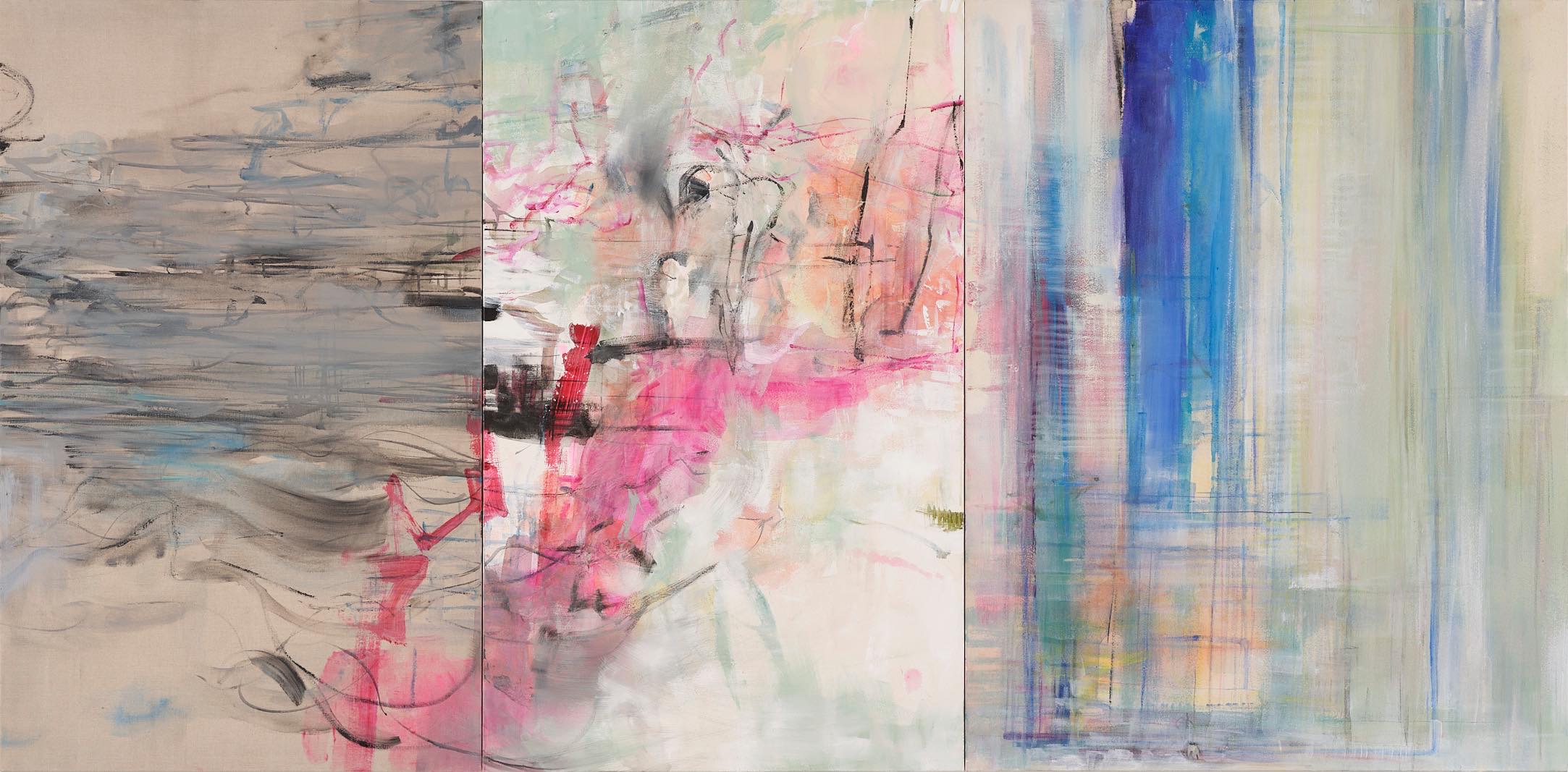
We at ANOMALY are pleased to announce the upcoming solo exhibition of works by Miyuki Tsugami titled Fragments, Plants, and Places with People, running from April 27 (Sat.) to May 25 (Sat.), 2024.
This second solo exhibition of Tsugami’s art to be held at ANOMALY will be the first display of more than 50 works. These include View, 20 Pieces, 2020-21, which has a total length of about 30 meters and retraces her work over a period of roughly 19 months, from May 2020 to November 2021, in a tableau containing of 20 works on canvas, like an intermittent picture scroll, with related drawings. The exhibition will also show View, Flowers, Places, 2023, a series of 10 newly produced copperplate prints, the first such prints that Tsugami made in about 10 years, and other new works.
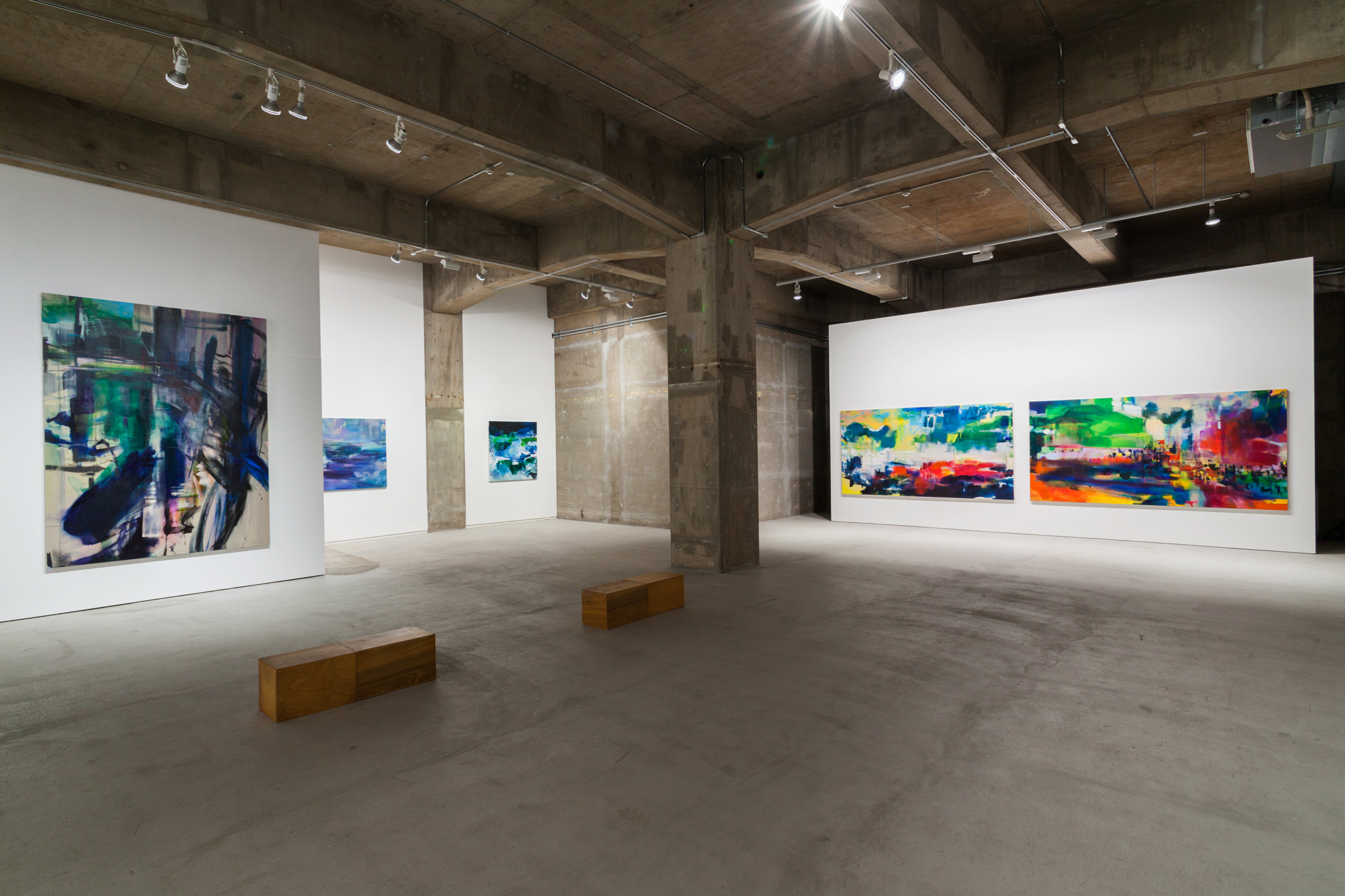
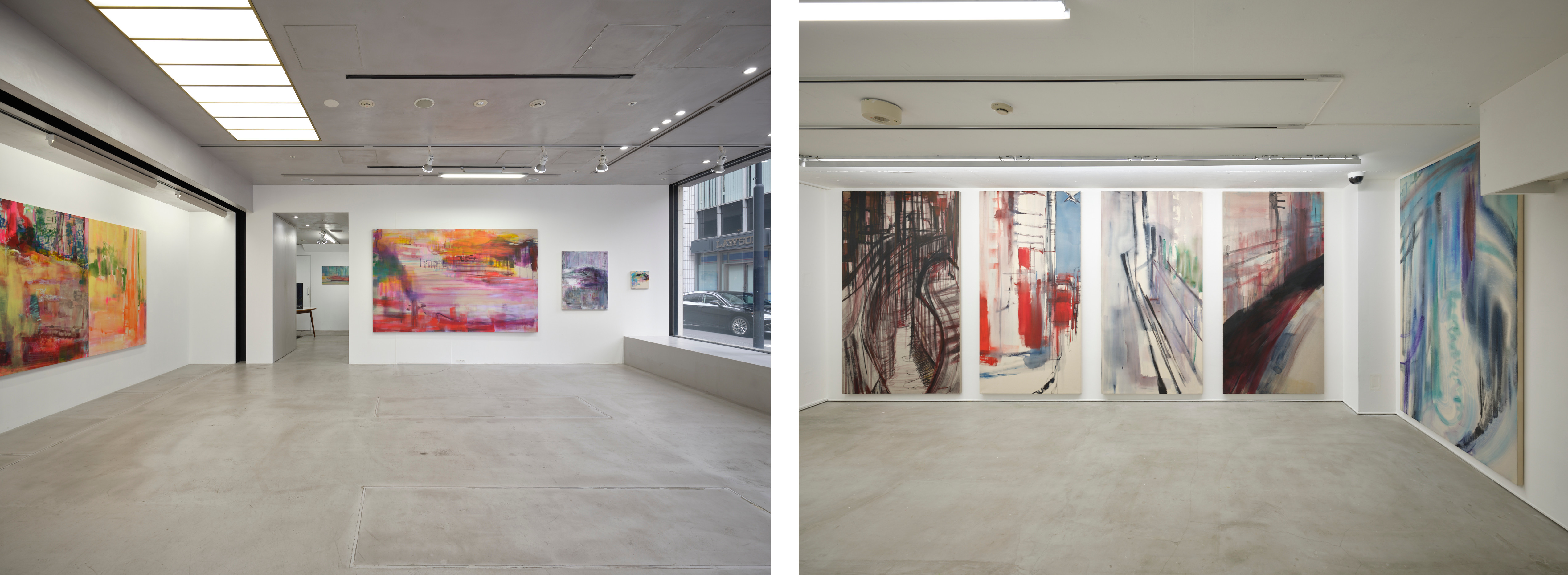
Right: “In A Whispering Way” Installation view at NADiff a/p/a/r/t, Tokyo (2022) photo: Ichiro Mishima
Since her solo exhibition at ANOMALY in 2019, Tsugami has energetically continued to produce art. At her solo exhibition titled Flowing, Ever Flowing held at CADAN Yurakucho (Tokyo) and that titled In A Whispering Way held at NADiff a/p/a/r/t (Tokyo) in 2022, she showed works that were tied to the land of these respective sites. More specifically, in creating these works, she researched the Hibiya district, which had once been an inlet, for the former, and the Shibuya River flowing in the vicinity for the latter. Similarly, for a special exhibition in 2023 at the Artizon Museum, Tokyo, in light of the nature of the museum location, she researched the former waterways and vicinity of the outer moat, and created works that shed light on the minor development that had been undertaken over the site’s long history and provided glimpses of the lives of the people who resided there. In the last part of that exhibition, a large group of works appeared in space that resembled a long and narrow corridor, and conveyed their affinity with the site and the freshness of the water-base pigments to viewers. These three successive exhibitions all shared the theme of water, which is indispensable for the existence and life of human beings.
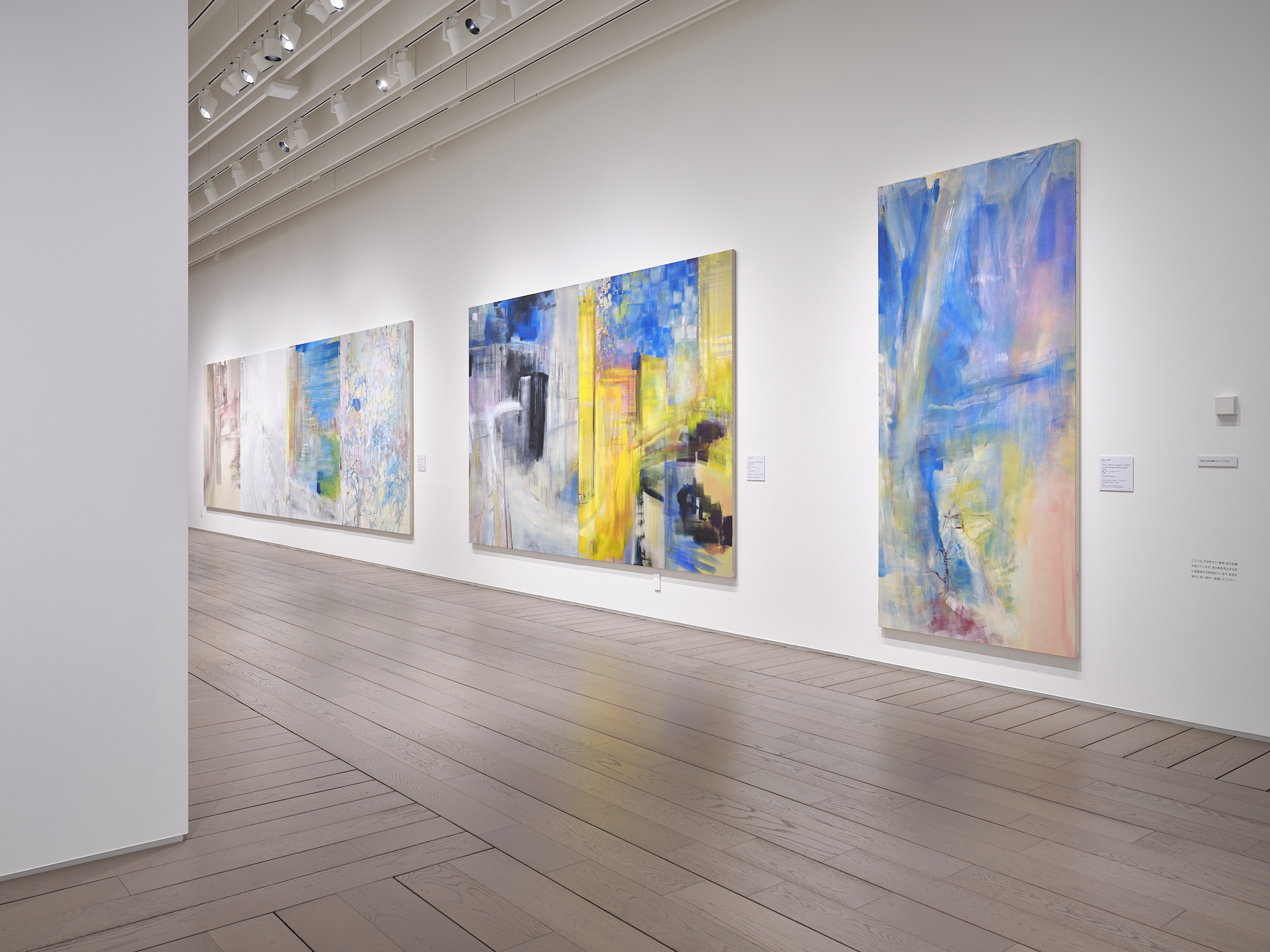
Installation view at Artizon Museum, Tokyo (2023) photo: Ichiro Mishima
Centre: View, Water, 21 December 2022, 2023 (from View Water 2022-2023 series) Collection of Artizon Museum
The series View, 20 Pieces, 2020-21, which will be shown for the first time at this exhibition, is comprised of works that Tsugami produced before these three exhibitions. They were painted from the daily sketches that are her forte par excellence, but have nothing in common as regards the time and place of their painting. If there is an underlying theme that we too could share, it could only be that they were born during what was called the Covid-19 pandemic.
“I want to know the truth of everyday life, including the uniform time we are given and the various times that cannot return. Looking back at it now, I guess this was the motivation for the series. Perhaps I felt an anxiety that, if I did not make the series, all of those special days would turn transparent.” (March 1, 2022)
As these words of Tsugami herself indicate, it could be that, tossed about by phenomena that plunged this world into a maelstrom of disruption, we are losing our sense of the passing time and even the memory of happenings surrounding us.
The exhibition title symbolizes the works in it. “Fragments” refers to the pieces of paper on which Tsugami sketches, the sketches and traces of words left on these pieces of paper, and the constituent elements making up this world, ourselves included. “Plants” are symbols of the uniform flow of time, inducing changes of form day after day but indifferent to the turmoil of human society. “Places with people” stands for the tracks of people echoing the changing times and the cities where they live.
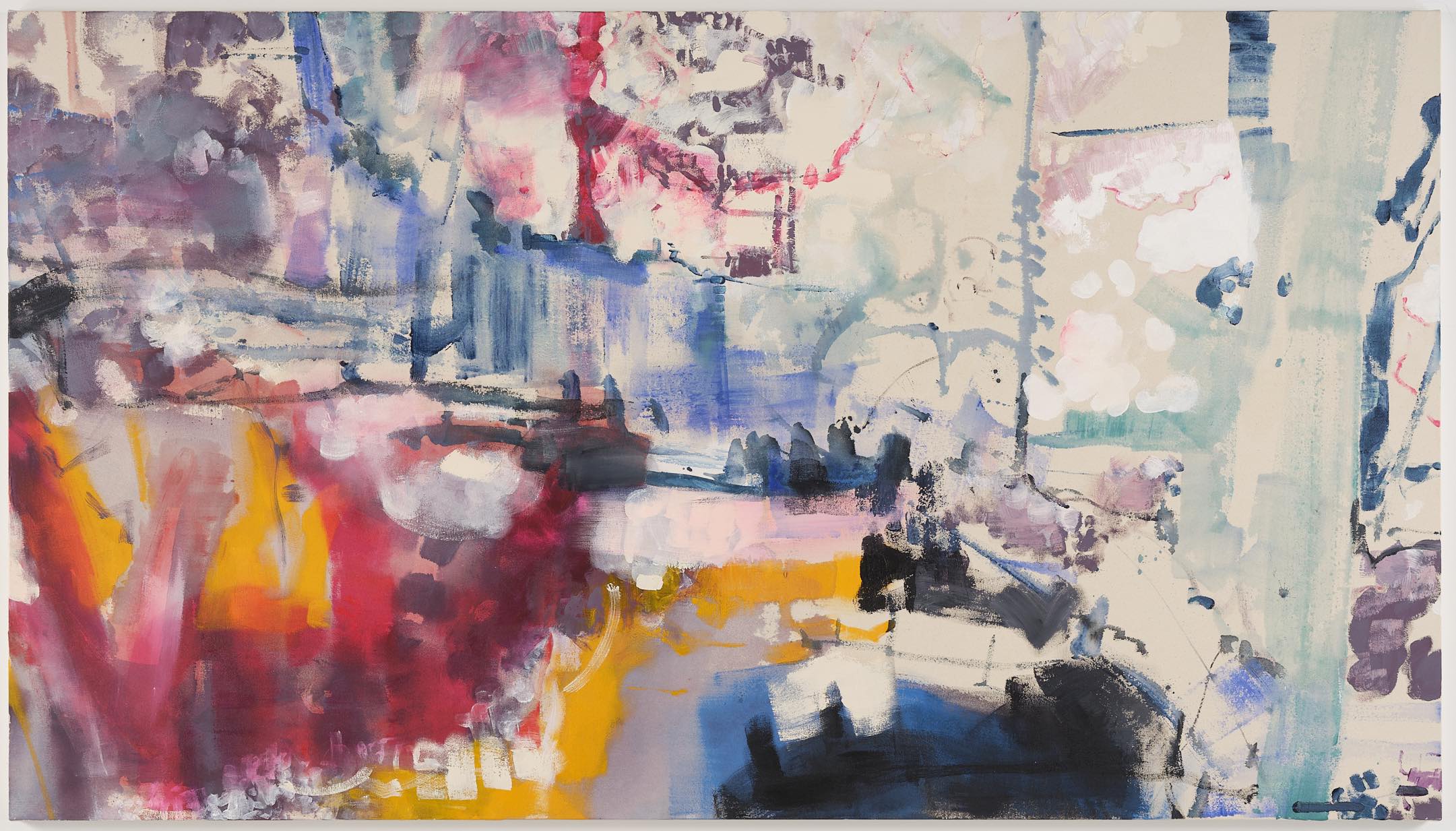
The copperplate prints newly made for this exhibition take flowers, grasses, and townscapes as their motifs. The plants are enlarged as compared to actual size, the street scenes are reduced, and the works are monochrome. Tsugami said she did this to make the different existences composing a landscape or scenery look equal.
The pictures on canvas in the View, 20 Pieces, 2020-21 series follow Tsugami’s usual production method of working from sketches, but are distinguished by the process applied. Sketches of varying size were first made into drawings all of the same size, and the drawings were then painted on canvases of the same height but varying width. Might not this process performed unconsciously by the artist conceivably have some connection with the way people spent a homogeneous period as existences that had their everyday life activity limited during the pandemic, wore facial masks, and appeared on the same rectangular monitors linked to others online. It was a period of not equalization on the nationwide level caused by big events like wars, but of forced equalization on the small, individual level.
What comes into view from these two mutually different series produced by Tsugami about the same time?
For artists alive now, the genesis of sketches and landscape paintings is completely different from that of those in the days before photography. What can we see in the perceptions and depictions by today’s landscape artists?
Although the pandemic is said to have ended, our days continue to be filled with uneasiness due to repeated natural disasters and strife. What meaning does (or did) “that time” have for an artist who absorbs the ongoing occurrence of various developments and continues to depict scenery and landscapes of the present (now) before her eyes, as she has done so far and will do in the future—and for us?
We earnestly hope that this exhibition will be an opportunity for again looking back at and thinking about “that time,” by experiencing the succession of works arrayed in the space of ANOMALY.
*At present, Tsugami is producing illustrations for, a serialized novel by Ryo Asai that has been running in The Nikkei (Japan Economic Journal) since April 1, 2023. Staying neither too close to nor too far from the story, her illustrations appear alongside the installments, and proceed from her stance of working from sketches as a daily routine. The April 8th issue ran her 300th illustration, and their appearance with the serials is scheduled to continue until the middle of June.

image size: H30xW36.5cm courtesy of Edition Works
The word “view” means not only objective sights and landscapes but also subjective ways of looking and thinking. Tsugami produces works whose titles are often prefixed with this word, and broadens perspectives in painting around it. Sketching became part of her daily routine as an outgrowth of her residence in the city of Kurashiki (under an artist-in-residence program sponsored by the Ohara Museum of Art in 2005), where she constantly worked with only natural light, in the absence of electrical equipment. How do people grasp the external world and as their world, and construct standards and values from their own viewpoints? Wanting to know each day as yet unknown, Tsugami continues to depict the fluid external world just as she observes it as far as possible, by making sketches on paper and sublimating them in paintings on canvas. Her landscapes are awaiting encounters with someone’s internal world, to which they will become new landscapes.
Miyuki Tsugami was awarded an M.F.A from the Kyoto University of Art and Design Graduate School in 1998. Her main solo exhibitions were 24 Seasons – Passing Sceneries, Connecting Minds (Spiral Garden, Tokyo, 2008), View—Trace and Reprise (Ichinomiya City Memorial Art Museum of Setsuko Migishi, Aichi, 2013), Landscape of Time, Connected Time (Pola Museum Annex, Tokyo, 2016), Landscape of Time, Piled Time (Gallery Hashimoto, Tokyo, 2016), Contemplation of Time (Ueno Royal Museum Gallery, Tokyo, 2018), and View—People and Landscapes (Nagasaki Prefectural Art Museum, Nagasaki, 2019). In recent years, she has participated in group exhibitions including Paintings Here and Now (Fuchu Art Museum, Tokyo, 2018), Beyond the Visible (Museum of Modern Art, Hayama, Kanagawa, 2019), Observation – Artists Confronting the Wonder of Looking Intently (Gunma Museum of Art, Tatebayashi, Gunma, 2019), and Abstraction: The Genesis and Evolution of Abstract Painting (Artizon Museum, Tokyo).
As for selection for awards and residency programs, Tsugami resided in New York upon her selection for the 7th Sekiguchi Art Foundation Award in 1996, won the Vision of Contemporary Art (VOCA) Award in 2003, and held a solo exhibition in Kurashiki, Okayama Prefecture of works she produced during a period of residence there after being chosen for the 1st ARKO (Artist in Residence Kurashiki, Ohara, Ohara Museum of Art) in 2005. She received the Kyoto City Artistic Newcomer Award in the same year. In 2013, she resided in London following her selection for the Newcomer Award in the Fine Arts Division of the Cultural Awards presented by the GOTO Memorial Foundation in the same year. In 2015, she resided in Berlin and Prenzlau with the support of the Agency for Cultural Affairs (under its program of overseas study for upcoming artists), POLA Foundation, Asahi Shimbun Foundation, and Nomura Foundation, and held a solo exhibition titled TSUGAMI Miyuki: Japanese Landscapes – Uckermark Landscapes. In 2016, she resided in Kitakata, Fukushima Prefecture under the Kitakata Yume Art Project, and held a solo exhibition of works she produced there.









